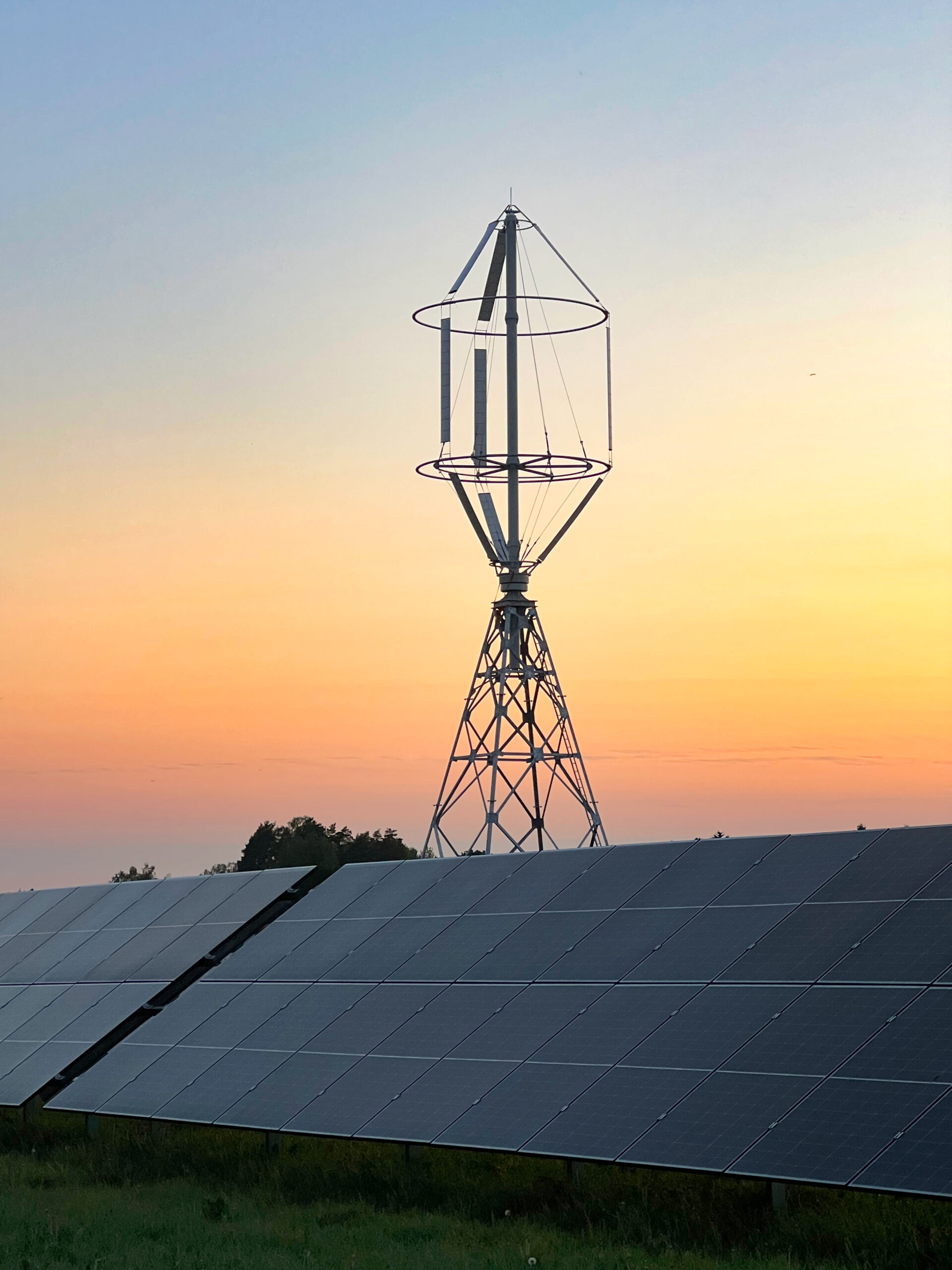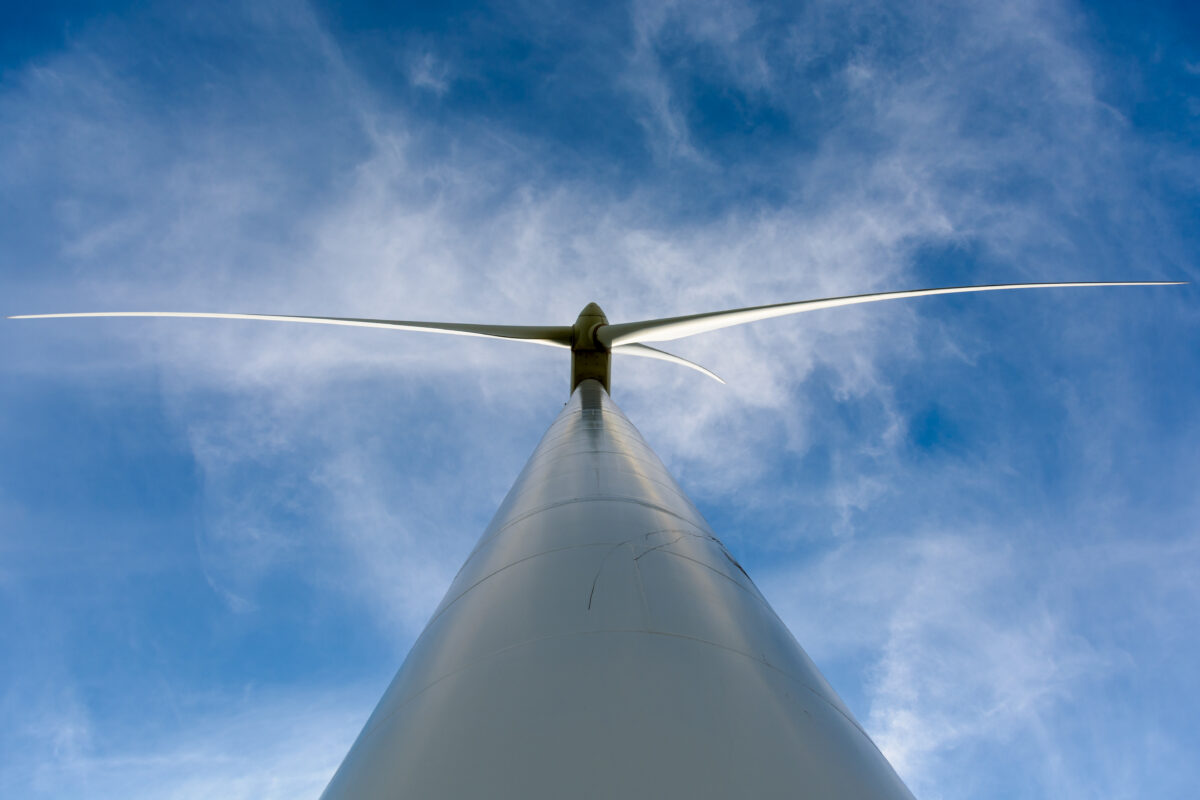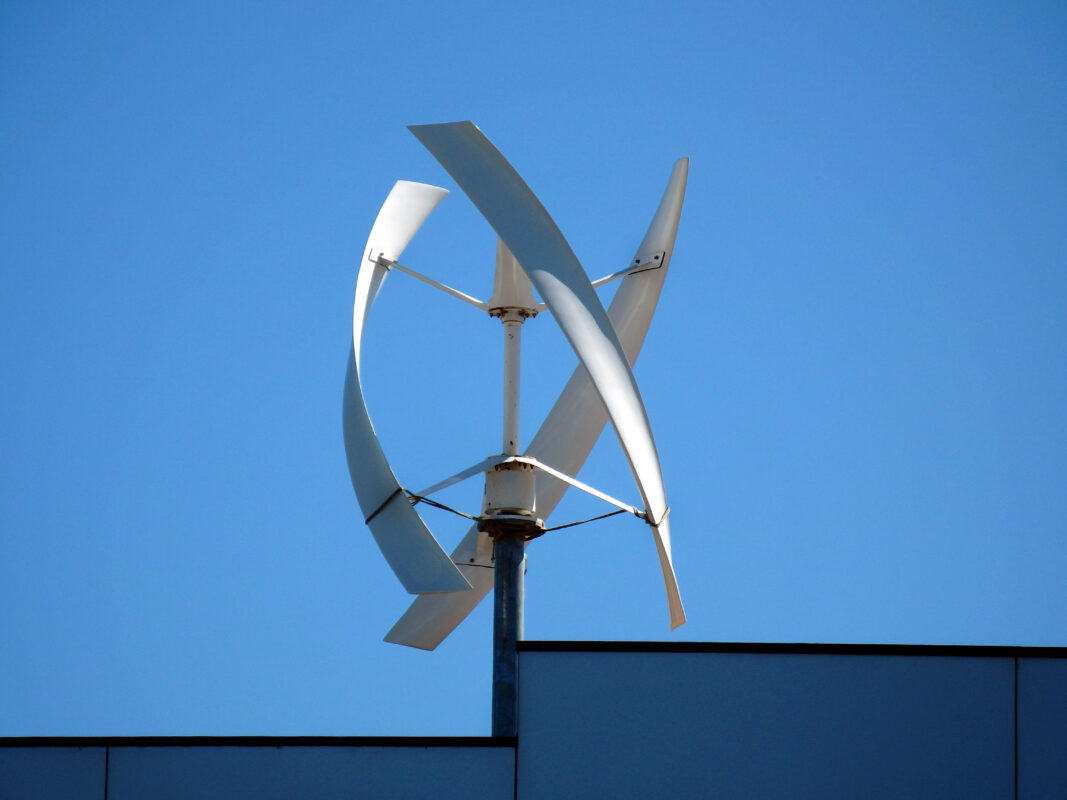Are small wind turbines carbon neutral? At first glance, it seems like they are—after all, they don’t emit carbon dioxide during energy generation. However, the reality is far more complex. To fully understand the carbon footprint of a wind turbine, we need to delve deeper into the subject. Read the article to discover how long it takes for a wind turbine to become carbon neutral.
Understanding the Carbon Footprint of Wind Turbines
Wind power is one of the fastest-developing renewable energy sources. Small wind turbines are considered a clean method of electricity generation and a way to lower CO2 emissions. However, “clean” doesn’t mean 100% environmentally neutral. How does wind energy, one of the rising stars in renewable energy, affect the natural environment?
What is the Carbon Footprint of a Wind Turbine?
First, let’s explain what a carbon footprint is in general. In the modern world, almost every human activity causes the emission of greenhouse gases (mostly carbon dioxide – CO2 – and methane). A carbon footprint is the total amount of these emitted gases, estimated for a person, organization, product, or activity. You may have heard of this concept in relation to travel, where the carbon footprint of flying is larger than that of travelling by train.
How does this apply to wind energy? Every wind turbine, whether small or large, needs to be manufactured, transported, installed, and eventually recycled–and none of these processes are carbon neutral. Each requires the use of tools, machines, and transportation, most of which are powered by electricity or fossil fuels. This is the main reason why wind turbines are not carbon neutral at the beginning of their lifecycle. When estimating the carbon footprint of a wind turbine, you need to consider the so-called grey energy–the energy needed for manufacturing, transport, and recycling.
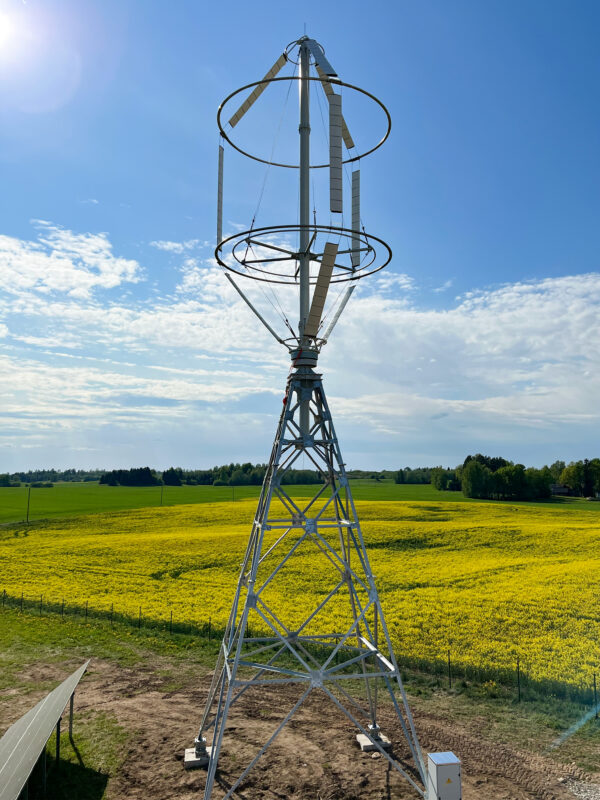
Wind Energy vs. Fossil Fuels: A Carbon Comparison
You probably don’t need exact calculations to assume that energy from fossil fuels generates more carbon emissions. Let’s compare the numbers:
- One of our products, the Freen-20 wind turbine emits 25 g CO2 for each 1 kWh of generated energy.
- A coal plant emits 1002 g CO2 for every 1 kWh.
What may be surprising is that not all renewable energy sources impact the environment in the same way. Compared to wind turbines, a solar plant emits 41 g CO2 per 1 kWh of energy. As you can see, green energy isn’t always the same–some sources, like wind power, are more environmentally friendly.
Learn how small wind turbines can impact your carbon footprint. Contact us to book free feasibility study and check the wind potential in your area!
How Long Does It Take for a Wind Turbine to Become Carbon Neutral?
As of now, it is impossible to achieve carbon neutrality during the manufacturing, construction, and transportation processes. Some manufacturers try to offset carbon emissions–they still emit greenhouse gases but reduce them elsewhere. This can be achieved by investing in clean technologies, planting forests, or supporting local organizations. All these activities contribute to counterbalancing carbon emissions.
These efforts are, of course, only partial solutions. No matter what companies do, carbon emissions remain a fact. What seems more important is reducing the time a product or technology needs to become carbon neutral. What does this mean? In general, carbon neutrality means producing and absorbing the same amount of carbon from the atmosphere.
In the context of wind turbines, we need to approach this issue slightly differently. A wind turbine becomes carbon neutral when the carbon emission reduction from its operation counterbalances the emissions from earlier stages: manufacturing, transport, installation, and recycling.
How do we estimate carbon reduction? To do so, we compare the energy generated by the wind turbine to that from conventional sources. Let’s say the grey energy used to manufacture and install the wind turbine generated X g of CO2. Green energy must counterbalance it. The X g of CO2 is the same amount that would be generated by Y kWh of conventional power. When the wind turbine generates equivalent power, it will achieve carbon neutrality. In other words, reducing carbon footprint by a wind turbine means reducing the demand for conventional power.
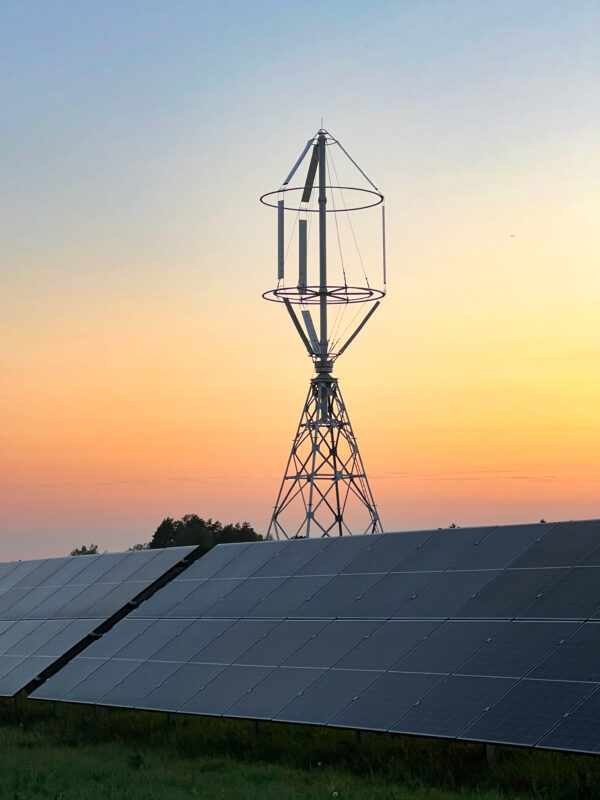
The Role of Small Wind Turbines in Reducing Carbon Emissions
Wind Power: A Key Player in Renewable Energy Sources
As mentioned earlier, wind power is becoming one of the most important renewable energy sources. In 2023 the global capacity of wind industry increased by 50% compared to the previous year. By 2030, the global electricity supply from this source could reach 20%. These numbers show that in a few years wind power, along with photovoltaics and hydroelectricity, will be one of the key players in renewable energy.
This change will affect not only the global economy, industry, and lifestyles but also the environment The U.S. Department of Energy predicts that if 20% of energy came from wind, gas consumption could be reduced by 50% and coal consumption by 18%.
Home Vertical Axis Wind Turbines: Benefits for Reducing Carbon Footprint
Reducing carbon footprint with wind turbines happens every day—when you use wind power instead of electricity generated in conventional power plants. All these small changes add up to a significant impact. According to various studies:
1 megawatt of wind energy can avoid 1,240 tons of CO2 emissions – about 500 kg of CO2 per 1 MWh.
800 MW of installed wind turbines could reduce CO2 emissions in Ireland by 9%.
Increasing wind turbines’ capacity to 4.5 MW could reduce CO2 emissions by 5 to 60%, depending on wind speed.
Reducing your carbon footprint can have long-term benefits, such as better air quality, slowing climate change, and improving physical health.
Are you curious to know more about the benefits of wind turbines and possible impact on your carbon footprint? Contact us to book free feasibility study and check the wind potential in your area!
Industrial Wind Turbines: Large Scale Carbon Reduction
The more powerful the wind turbine is, the more conventional energy can be replaced with green energy. Does this mean that large wind farms offer more environmental benefits? There is a correlation between a wind turbine’s carbon footprint and its power and size, but it’s different from what you might expect.
Industrial wind turbines have larger blades and rotors, which means they require more components and may need larger trucks for transportation. At the end of their lifecycle, they must be recycled, which impacts the environment more than recycling small wind turbines. This leads to one conclusion: while industrial wind turbines can reduce the carbon emissions associated with conventional energy generation, they also require more grey energy for their production, transport, and recycling.
Let’s compare home vertical wind turbines and industrial wind turbines. The Freen-20 (with a power of 20 kW) consumes 2.5 MWh of energy during its lifetime – 10-15 times less than it produces. A typical large wind turbine consumes much more energy – 4.5 MWh during its lifetime. This affects the time of energy payback. For the Freen-20, it’s only 7 weeks of operation. A large wind turbine needs more – up to 9 months.
Industrial wind farms don’t contribute to air pollution through carbon dioxide emissions, but they have one downside – they require more grey energy than home vertical axis wind turbines.
The Environmental Impact of Wind Turbines
Do Wind Turbines Use Fossil Fuels?
When you look closely at how wind turbines work, you won’t see any direct use of fossil fuels. But let’s answer another question: are fossil fuels used in the manufacturing process?
It’s almost impossible to avoid them completely. Fossil fuels are used in power plants that provide energy to factories. Trucks and machines needed for transport and installation are powered by gasoline or diesel. These are just a few examples, but they show that it would be very hard to keep all processes during the lifecycle of a wind turbine free from fossil fuels.
Wind Farms and Air Pollution
Do wind farms affect air quality? Yes, but in a positive way. By generating energy from wind, you reduce the amount of energy needed from conventional sources. Therefore, wind farms help to reduce CO2 and NOx emissions.
According to U.S. studies, reducing air pollution through wind power has resulted in $2 billion in health benefits – especially among racial/ethnic minorities and low-income populations.
Wind Turbine Technology and Its Contribution to a Greener Planet
What Makes Wind Energy Green?
There are several factors that make wind energy environmentally friendly:
It helps reduce the demand for energy generated from fossil fuels. The more power a wind turbine generates, the less energy is needed from conventional power plants.
The physical footprint of a wind turbine is relatively small. While it generates some noise and impacts the landscape, these issues can be mitigated by placing wind farms far from residential areas.
It positively affects local communities. Besides improving public health, the wind power industry also provides well-paid jobs.
Wind turbines have a long lifecycle. A good-quality, modern device can last 20-25 years, provided it is maintained properly. This means less electronic waste and fewer carbon emissions during the recycling process.

Advancements in Wind Turbine Technology
Thanks to technological advancements, wind turbines can offset their carbon footprint faster and become carbon neutral in a relatively short time. What’s most important is that:
- Wind turbines have become increasingly powerful over the years thanks to larger rotors and longer blades, allowing them to generate more energy even at low wind speeds.
- New energy storage options, such as high-capacity batteries, allow excess energy to be stored and used when the wind is low, reducing reliance on conventional energy.
- Manufacturers are starting to focus on sustainability and the use of recyclable materials. Freen wind turbines, for example, are made of metal, which is fully recyclable and can be resold. This helps reduce the carbon footprint at the end of a wind turbine’s lifecycle.
Conclusion
The carbon footprint of wind energy is already lower than that of fossil fuel energy or even solar energy. However, there is still much work to be done to reduce it further. What is the future of carbon-neutral, environmentally friendly wind turbines? Designers and manufacturers should focus on reducing the amount of grey energy needed for producing and installing turbines. This can be achieved by choosing recyclable components, using clean energy in factories, and developing wind turbine technologies that extend their lifecycles.


